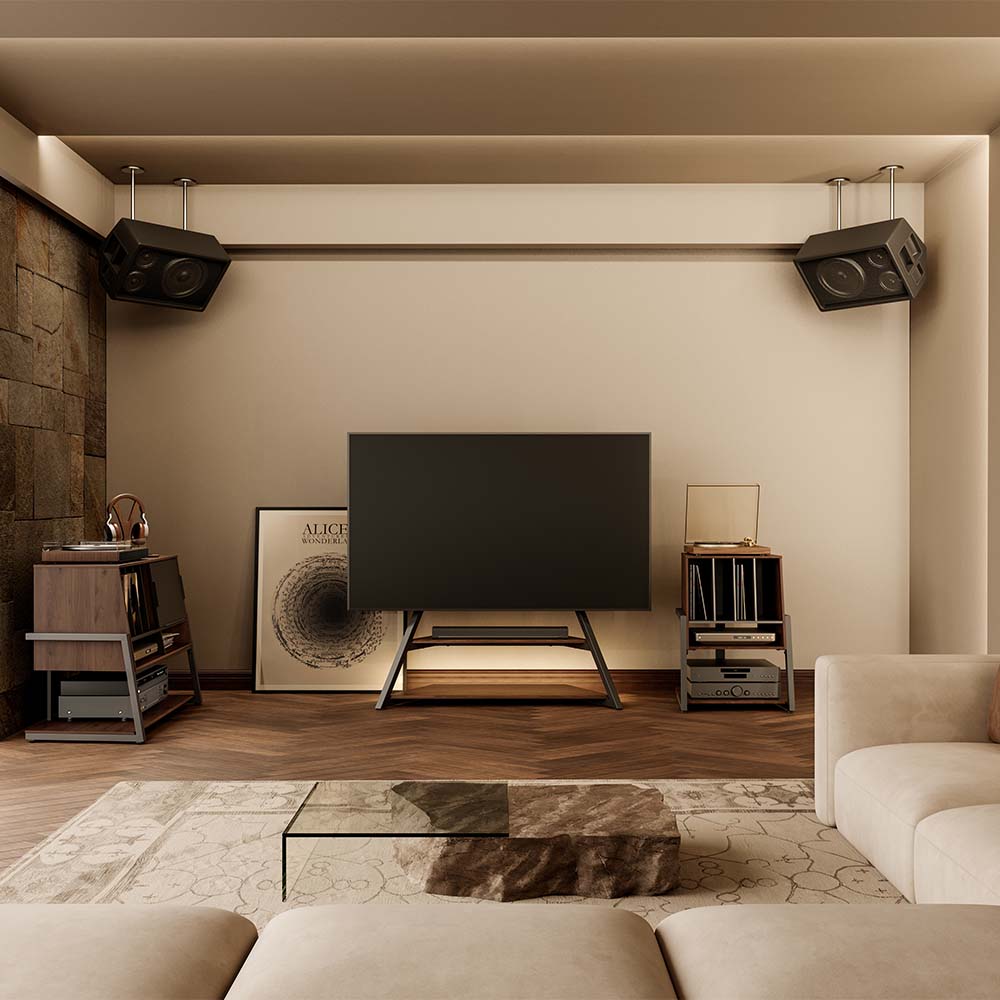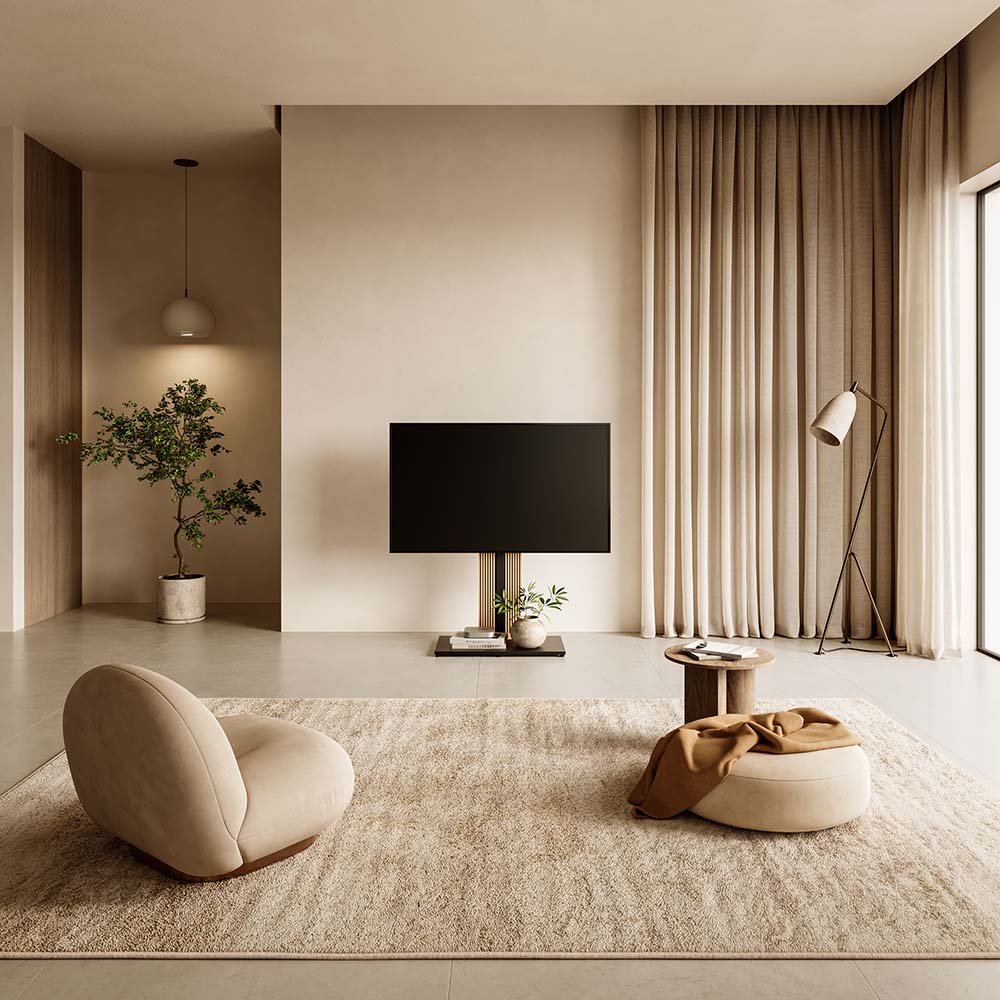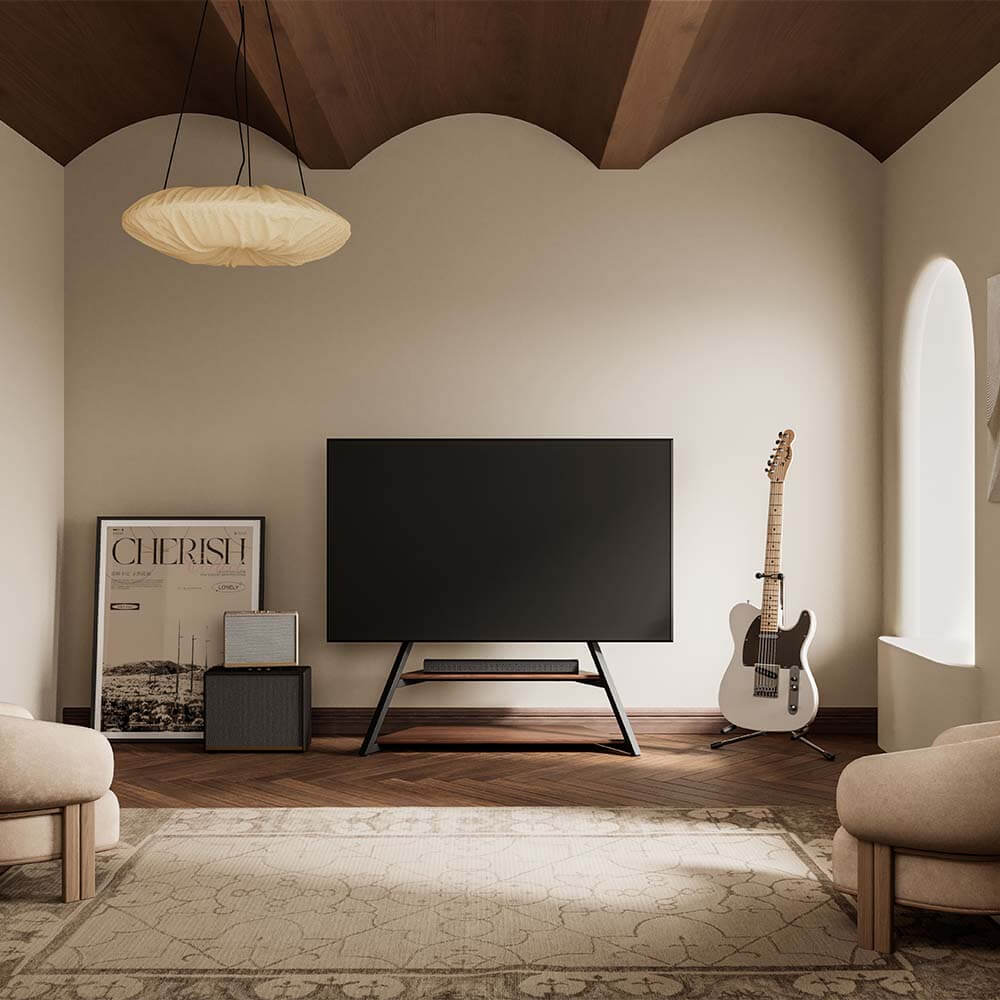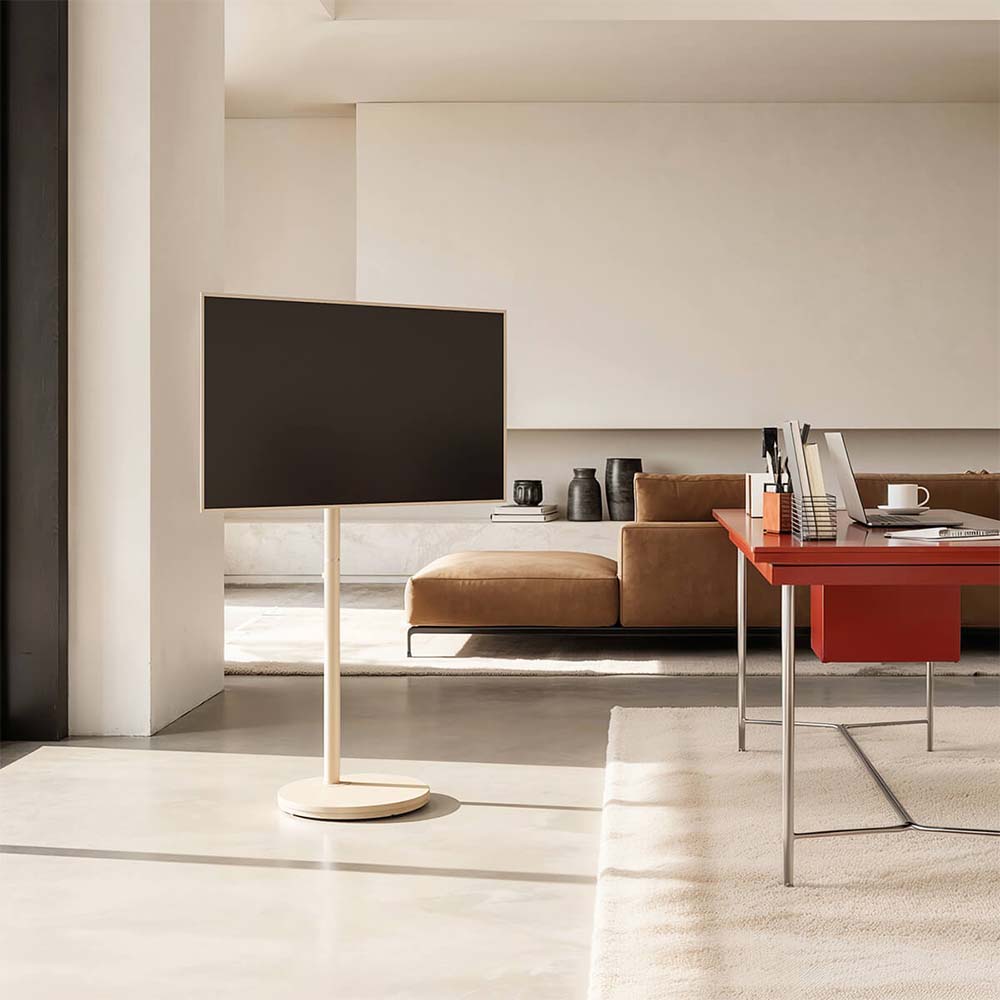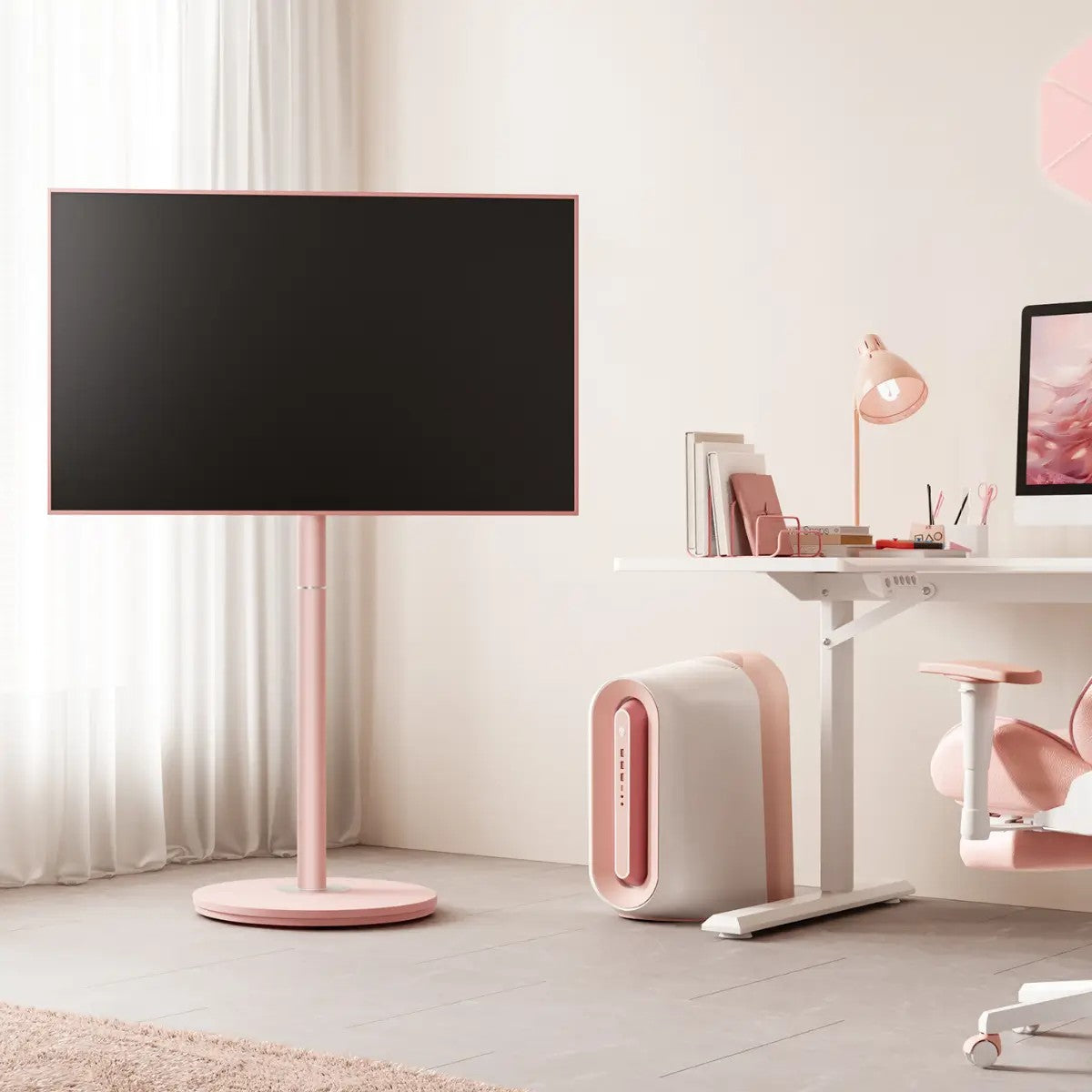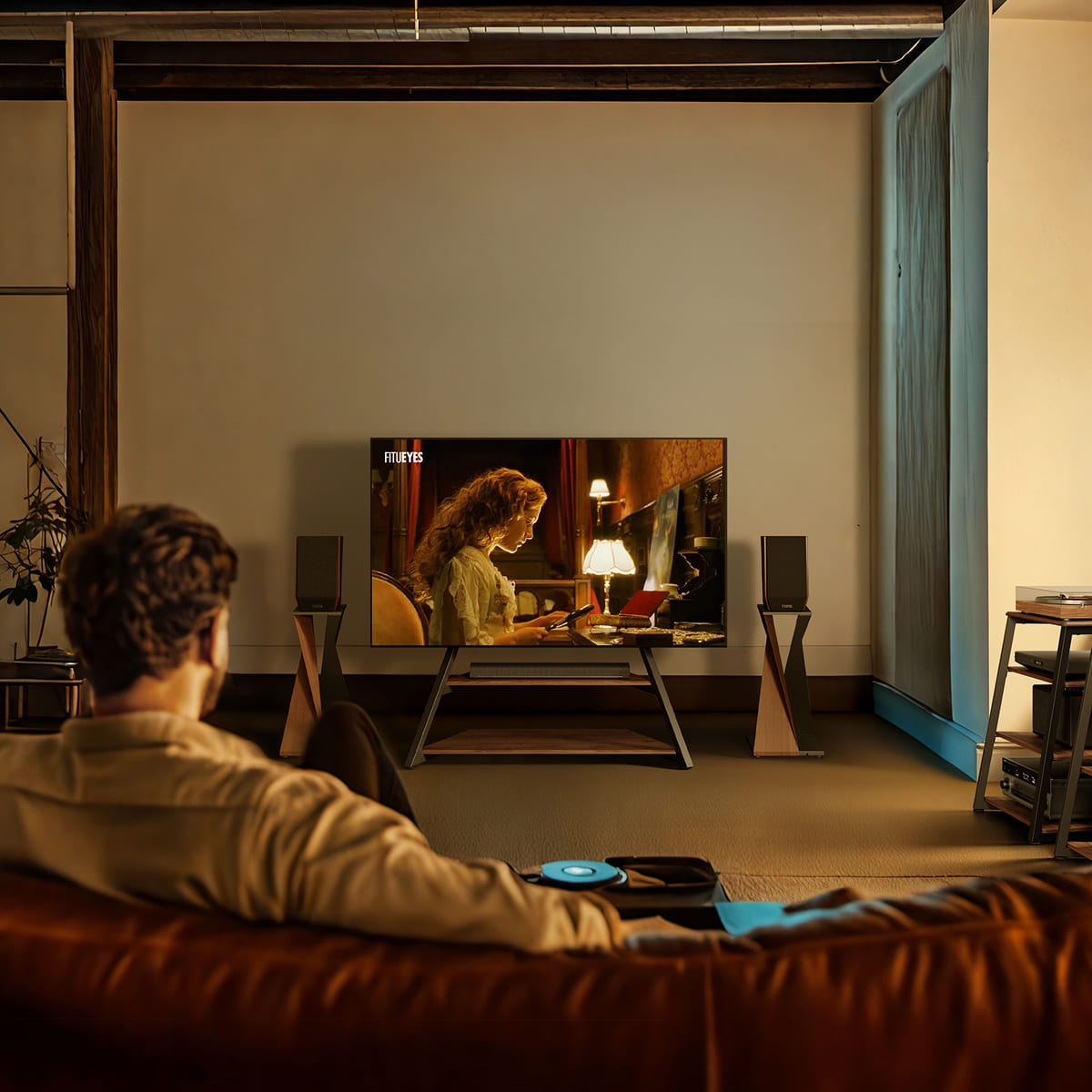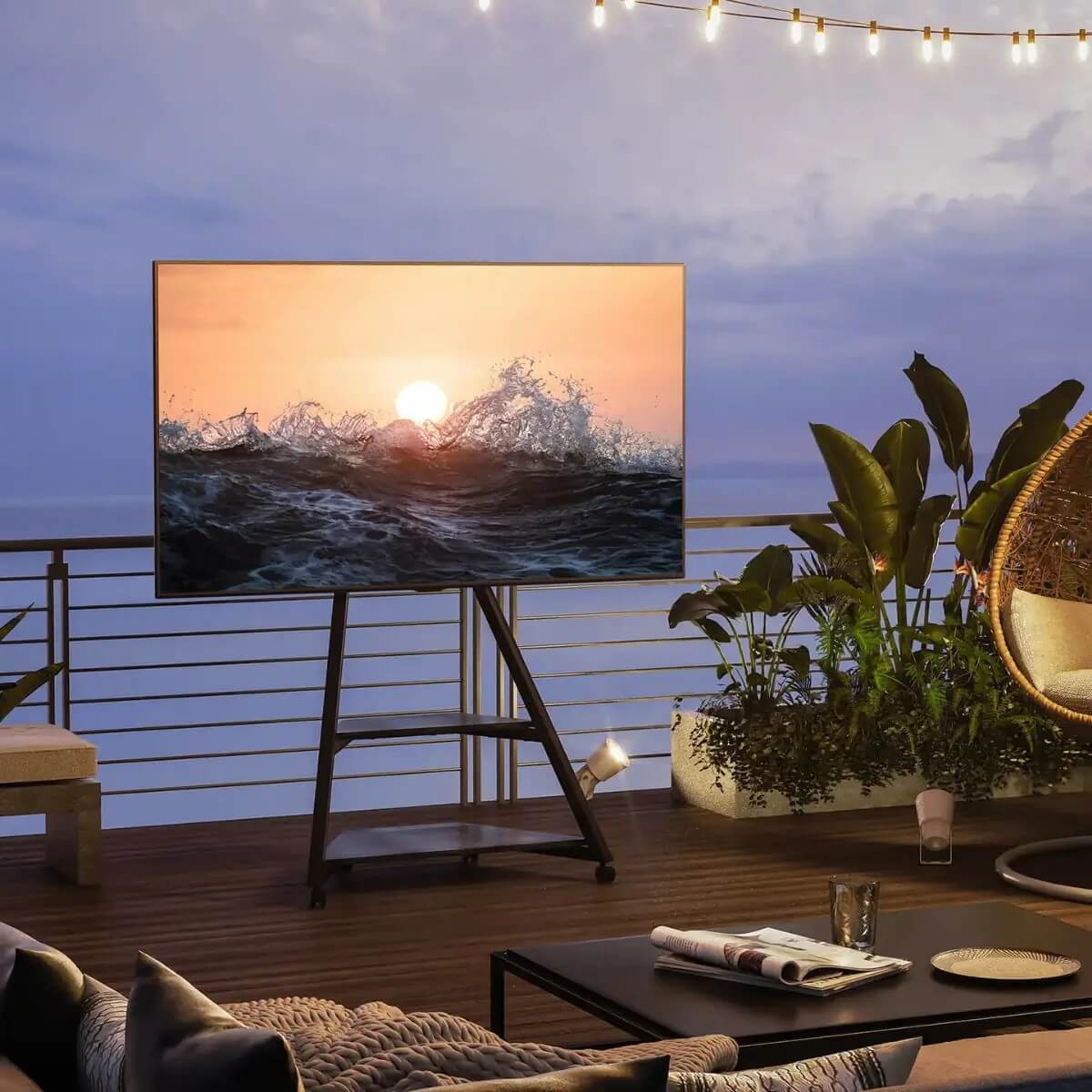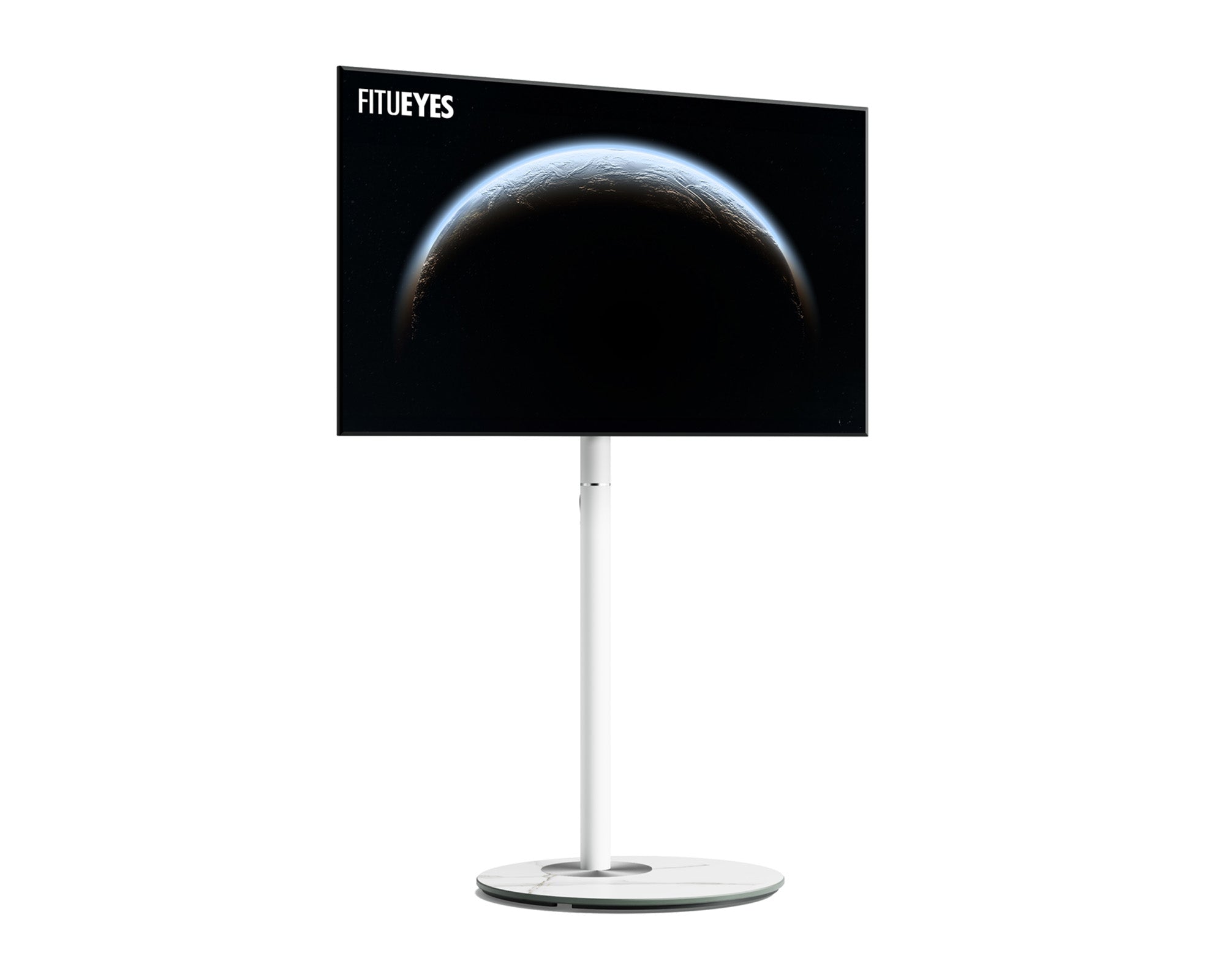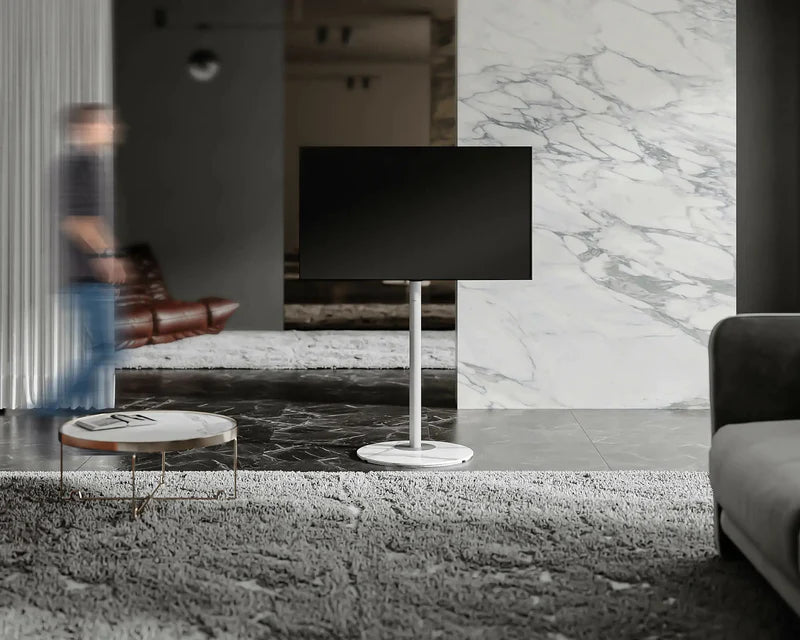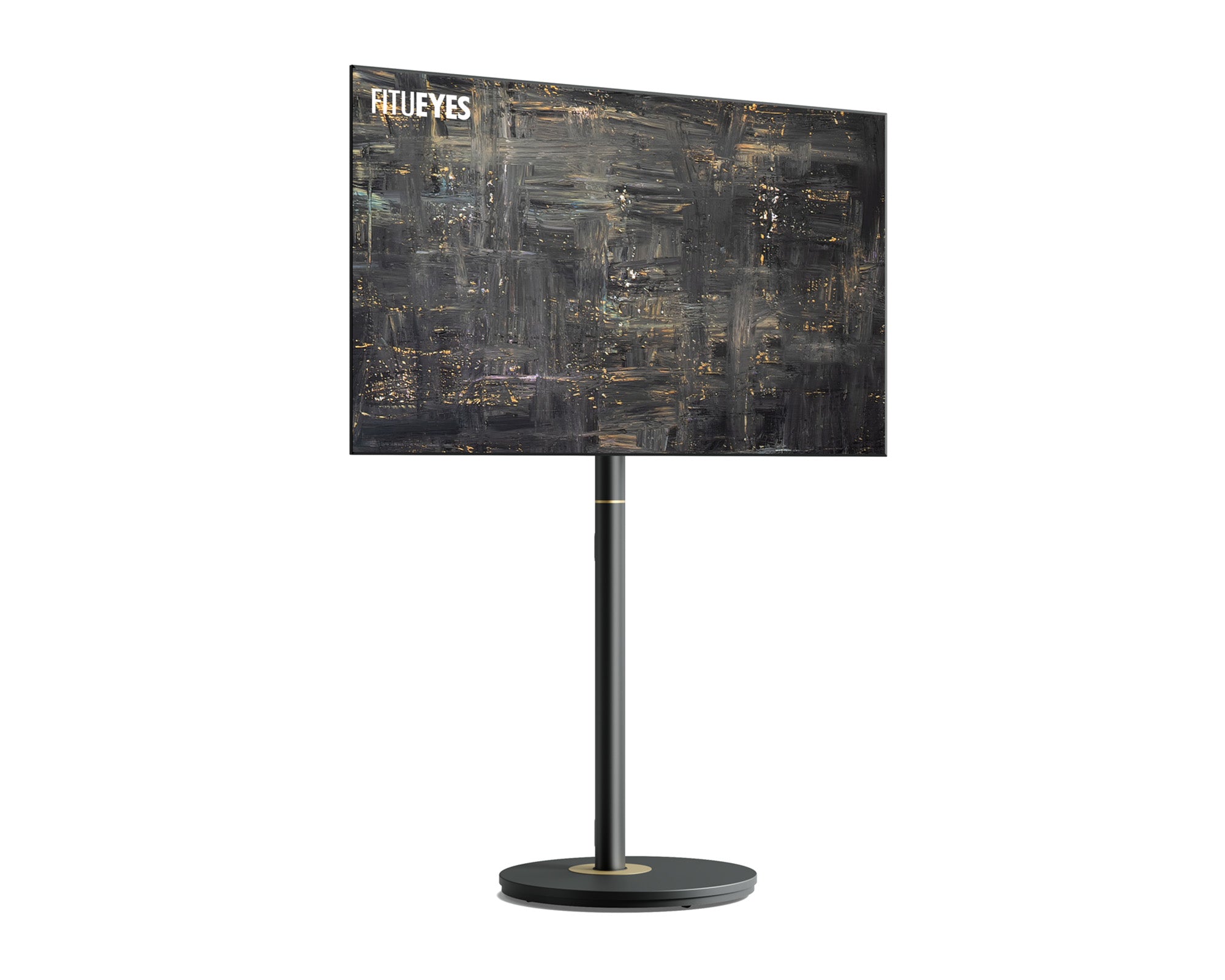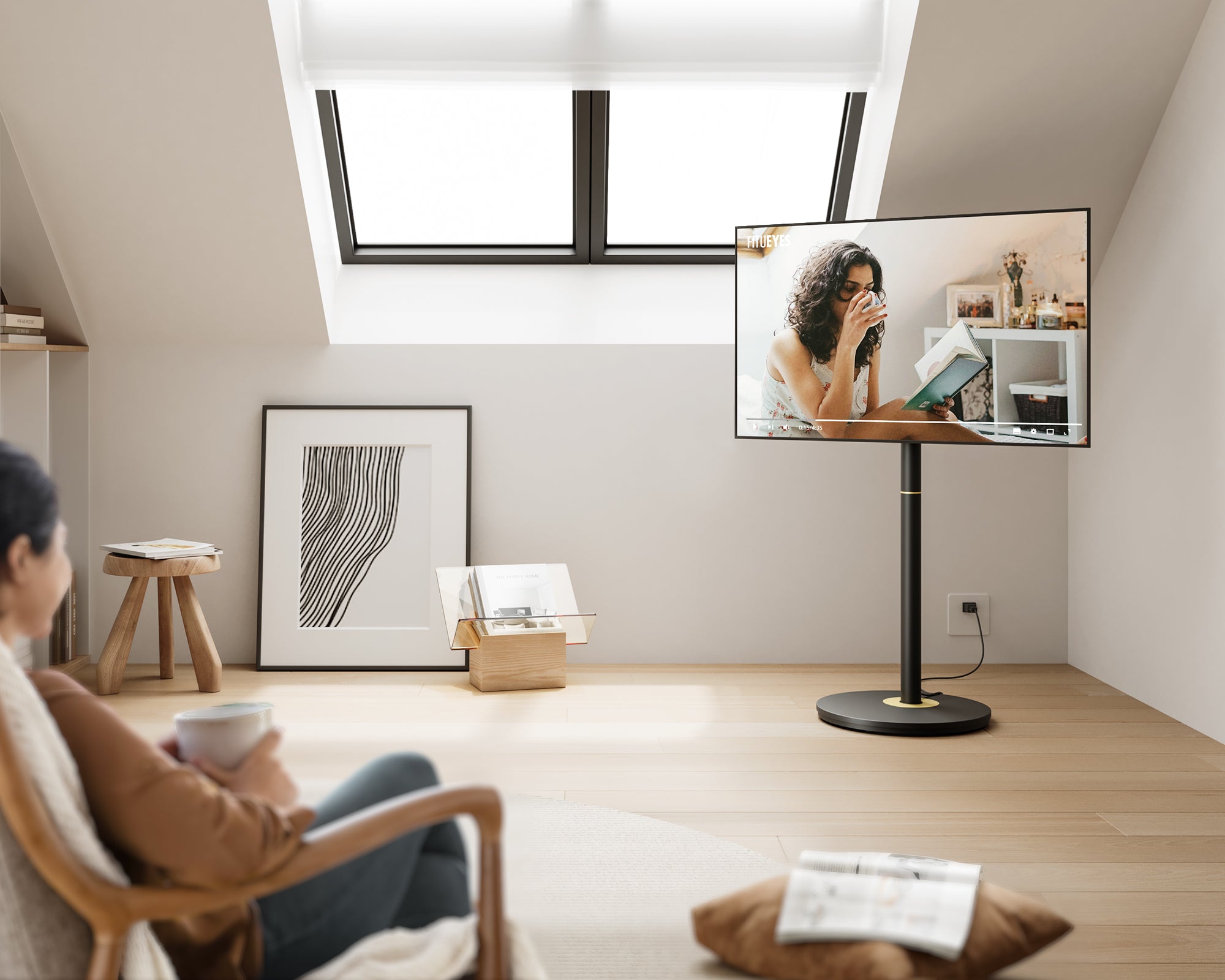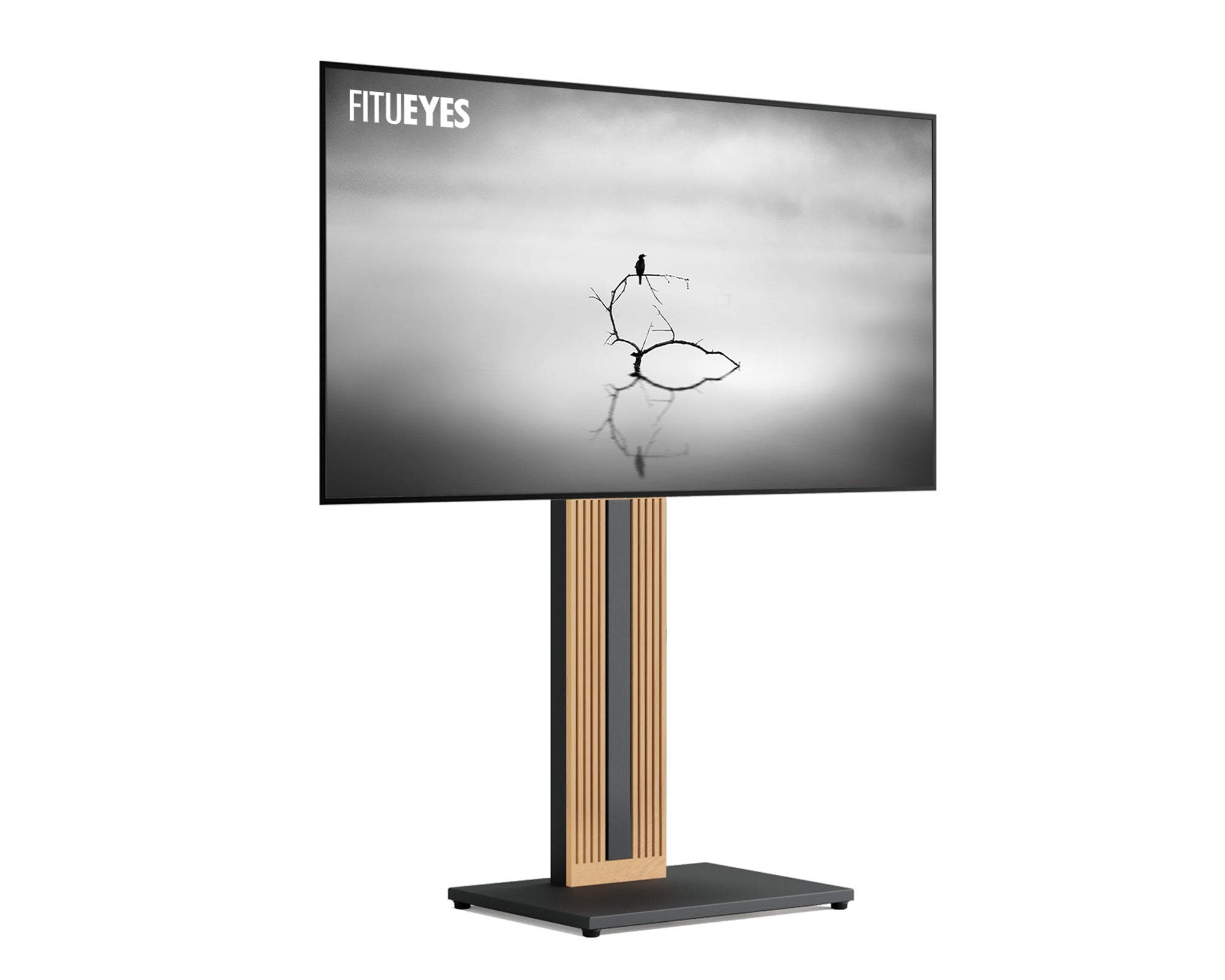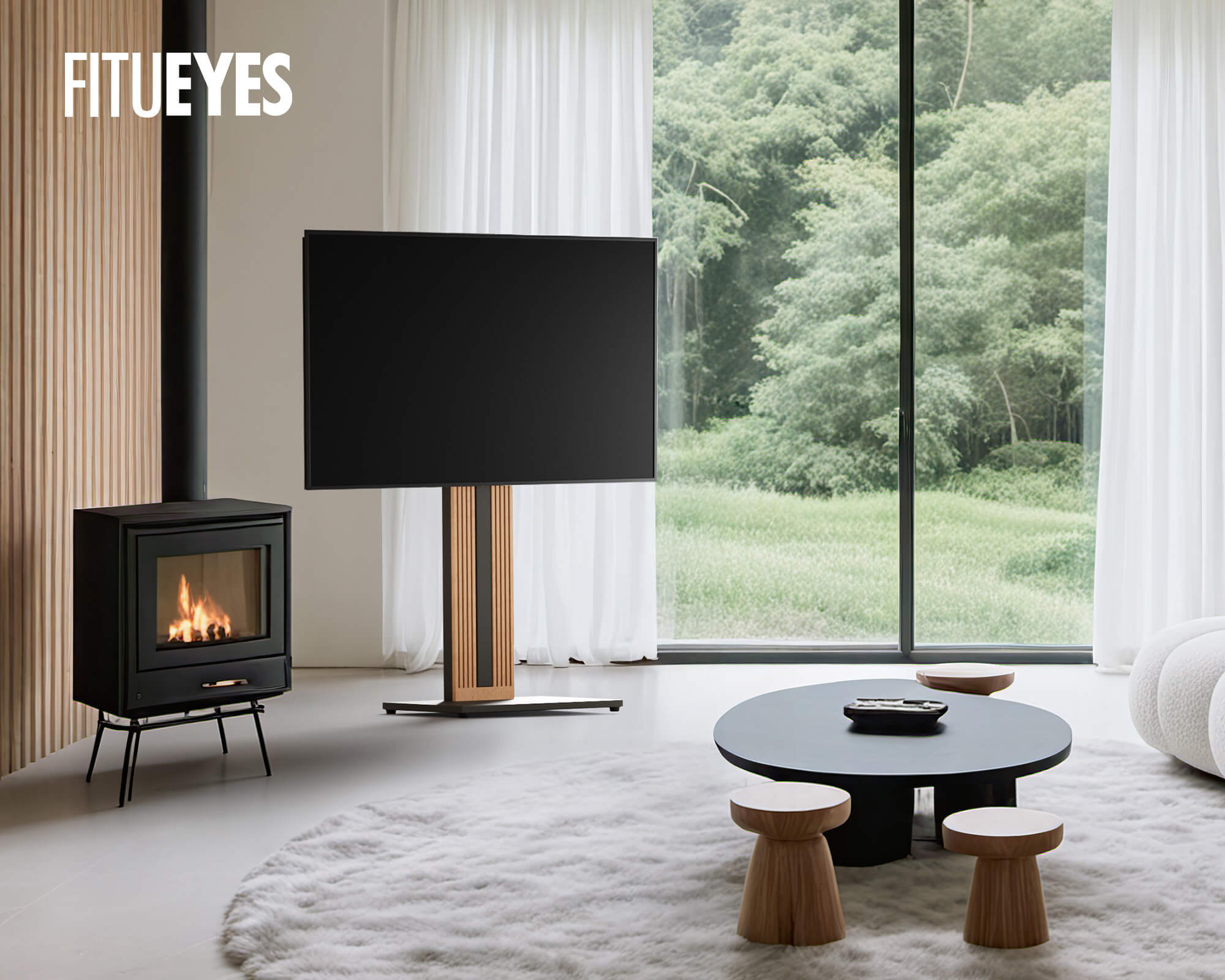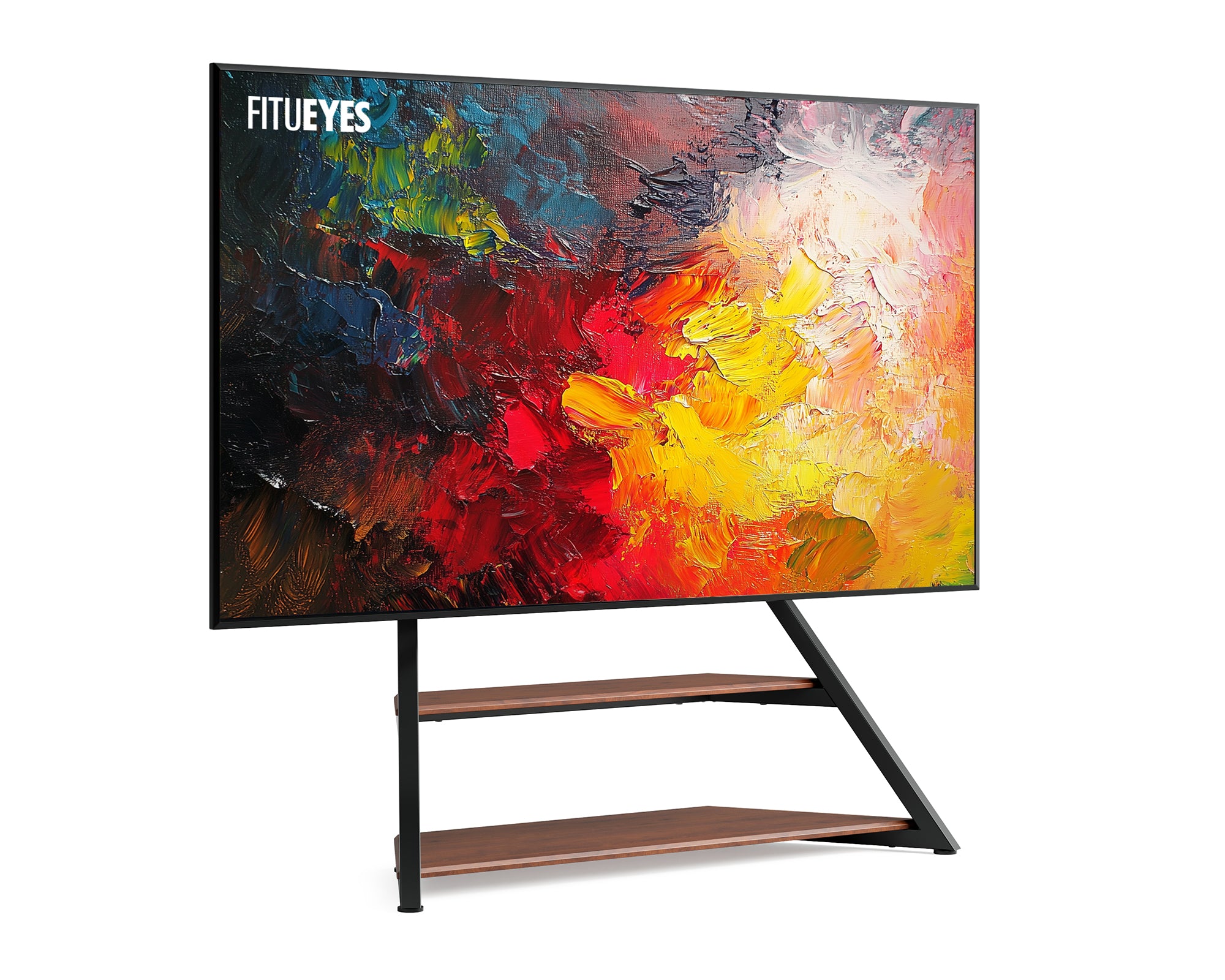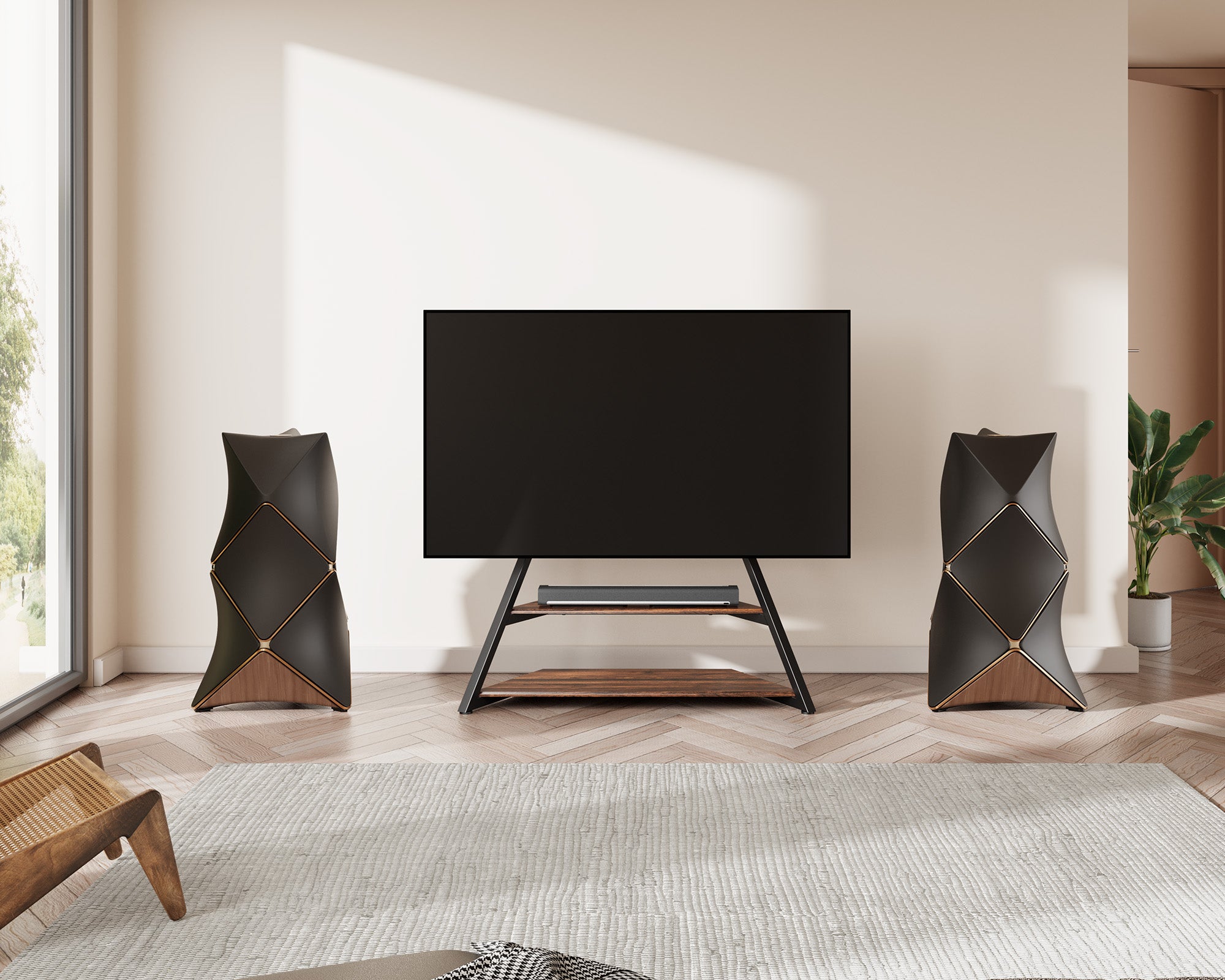A TV stand is ideal if you want extra storage space and easier access to cables, while a wall mount is perfect for saving space and creating a clean, modern look. Both options come with their own advantages and disadvantages, so it’s important to consider your room layout, interior style, and how you use your TV. In this guide, we’ll help you decide which solution is the right choice for your home.
1. Space Saving: Which Option Saves More Room?
Wall Mounts for Maximum Space Efficiency
If your priority is to save space, wall mounting is often the best choice. By securing your TV directly to the wall, you free up valuable floor space, making your room feel more open and less cluttered. This is especially beneficial for people living in small apartments or compact living rooms.
Tip: If space is limited, a wall mount can make a big difference. It not only maximises unused wall areas but also gives your room a cleaner, more minimalist look.
Space-Saving TV Stands for Your 65-Inch Television
If space is a concern, a 65-inch TV stand can be the perfect solution. A well-designed TV stand not only provides stable support for your television but also offers storage for media devices, DVDs, and gaming consoles. For households with limited space, corner TV stands are a great way to optimise room layout while keeping your living area neat and organised.
Tip: Check out the Master V2 FT65 Corner TV Stand, specially designed for TVs up to 65 inches. It’s an excellent choice for saving valuable space in smaller rooms.
2. Aesthetic and Design Preferences: What Matches Your Style?
Minimalist, Modern Look with Wall Mounts
For those who prefer a sleek and elegant aesthetic, wall-mounted TVs create a minimalist appearance that blends seamlessly into modern interiors. They give the impression that the TV is floating in the air, while eliminating the clutter often associated with traditional TV cabinets.
Tip: Wall mounts are ideal for achieving a modern, tidy living room atmosphere—especially when combined with cable management systems that keep wires neatly hidden.
Design TV Stands
If you’re passionate about interior design and home aesthetics, a TV stand is often the more suitable choice. Available in a wide range of styles—from wood to metal—TV stands can complement different décor themes with ease. Another advantage is their mobility: you can easily move them around, making them a practical option if you want to use the same television in multiple rooms.
Tip: TV stands can enhance your living space with both style and function. They’re usually easy to move, provide extra storage, and perfectly combine practicality with aesthetics.
3. Viewing Comfort: Finding the Optimal Height and Angle
Adjustable Wall Mounts for Ergonomic Viewing
One of the greatest advantages of wall mounting is flexibility. With adjustable tilt-and-swivel wall mounts, you can customise both the height and viewing angle of your TV to achieve the most ergonomic position for your sofa or armchair.
Tip: When installing your TV, make sure the screen is at eye level when seated for maximum comfort. Adjustable mounts are especially useful if you have multiple seating areas, as they allow you to adapt the viewing angle with ease.
Fully Adjustable TV Stands
Many modern TV stands come with multiple adjustment features such as tilt, swivel, height adjustment, and mobility. This allows you to position your television at the perfect viewing angle. These stands not only focus on aesthetics but also provide greater flexibility in achieving the best line of sight.
Tip: If you’re unsure about the ideal viewing angle, choosing a stand with adjustable features is a smart option. It gives you the flexibility to adapt the TV position to your personal comfort and room layout.
4. Safety and Stability: Which Option Is More Secure?
Wall Mounts for Maximum Stability
Wall mounts are often considered the safer option, as they firmly secure the TV to the wall, eliminating the risk of tipping over. This is especially important in households with children or pets. When properly installed, wall mounts provide a high level of safety and long-term stability.
Tip: Before installation, make sure your wall can support the weight of your television. Use high-quality mounting hardware or hire a professional installer to ensure maximum security.
TV Stands with Anti-Tip Protection
If you prefer a TV stand, choose a model with built-in anti-tip features, such as securing the stand to the wall with brackets or safety straps. This provides extra protection, especially for households with young children or active pets.
Tip: Opt for a sturdy TV stand made from durable materials like solid wood or metal to enhance stability and reduce the risk of tipping.

5. Easy Installation: DIY or Professional Help?
Wall Mounting
Wall mounting can be challenging, especially for those unfamiliar with installation. While most mounts come with detailed instructions, the DIY process can still be difficult for some users. Professional installation services are available, but they can increase overall costs.
Tip: If you’re not confident in handling the installation yourself, it’s best to hire a professional installer. However, if you have basic tools and some DIY experience, many wall mounts include user-friendly guides that make the process easier.
TV Stands: Easier Installation
TV stands are generally much easier to set up. Most models come with clear instructions, and many are even pre-assembled, saving you both time and effort. Even DIY TV stands can usually be put together quickly and require far less technical work than wall mounting a television.
Tip: If you prefer a hassle-free setup, choose a TV stand with minimal assembly requirements or opt for a pre-assembled model.
6. Budget: Which Option Fits Your Wallet?
Affordable Wall Mounts
Wall mounts are generally more affordable than TV stands. However, if you need to hire a professional for installation, this will increase the overall cost. Some premium wall mounts also include extra features such as tilt and swivel adjustments, which can make them more expensive.
Tip: If you’re working with a limited budget, a DIY wall mount installation is the most cost-effective solution.
TV Stand Prices
The price range for TV stands varies widely. Budget-friendly models can start at around €50, while premium designs can cost several hundred euros. The final price often depends on the materials used, the overall design, and added features such as storage compartments or built-in cable management.
Tip: If you want extra features like storage space and cable management, investing in a higher-quality TV stand can be well worth it.
7. Long-Term Flexibility: Will Your Setup Meet Future Needs?
Flexibility with Wall Mounts
Once installed, wall-mounted TVs are relatively fixed in place. If you decide to upgrade to a larger television in the future, you may need to replace the wall mount to ensure it supports the new screen size.
Tip: Look for universal wall mounts designed to fit a wide range of TV sizes. This makes future upgrades easier without the need to purchase a completely new mount.
Modular TV Stands for Future Upgrades
TV stands generally offer greater long-term flexibility, especially modular units that can be adjusted or expanded to fit new televisions or future TV sizes.
Tip: Choose a modular TV stand with adjustable shelves and compartments so you can continue using it even when upgrading your television or adding new entertainment devices.

Frequently Asked Questions (FAQs)
1. Can I Mount My TV on a Drywall?
Yes, but it depends on the wall mount and the weight of your TV. You must ensure that the mount is securely attached to the wall studs for maximum stability. If you’re unsure, hiring a professional installer can ensure the job is done correctly and safely.
2. How Can I Ensure My TV Stand Is Stable?
Choose a TV stand with anti-tip features, such as brackets or safety straps that can secure the stand to the wall. Additionally, make sure the stand is made from sturdy materials, like solid wood or metal, to guarantee stability.
3. Which Option Is Better for Small Spaces: a TV Stand or a Wall Mount?
Wall mounting is generally the best choice for small rooms, as it frees up floor space and makes the area feel more open. However, if you need additional storage, a TV stand can be a practical compromise.
Conclusion
The choice between a TV stand and a wall mount depends on your individual needs and preferences. If you want to save space, achieve a modern aesthetic, and reduce clutter, a wall mount may be the right option for you. If you prefer extra storage, greater flexibility, and easier installation, a TV stand could be the better choice. By considering factors such as space, design, safety, budget, and long-term flexibility, you can confidently make the best decision for your TV setup and lifestyle.







